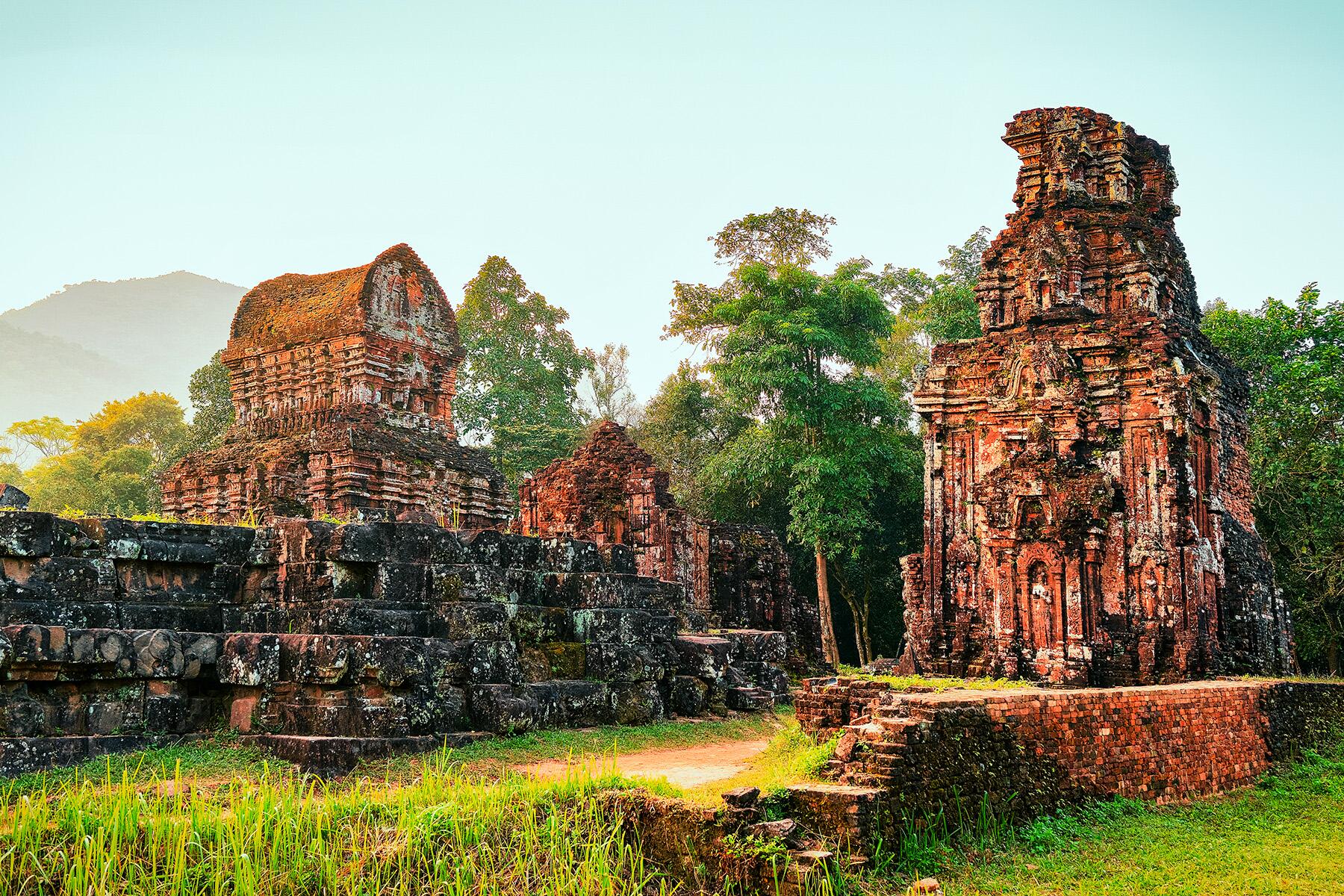How a sexually rebellious Victorian community made this town famous.
Free love, a cult leader, one big marriage, and constant onlookers—this is neither a modern reality show nor a hippie tale from the 1960s. Even the famously frigid Victorians craved a spicy, sexy drama. And there was no better show than what happened in Upstate New York in the last half of the 19th century.
Considered the thumb of the Finger Lakes region in New York, Oneida today is a small city on the edge of the lakes and the Adirondack Mountains. When people hear Oneida, many think of the luxury silverware brand that has been a staple of wedding registries for a century. Yet in the late 1800s, thousands of people came by train to witness one of the country’s most successful utopian attempts. Based on communal living, including group marriage and open sexual relations in the Victorian era, this intentional community spawned both the silverware empire and a scorned presidential assassin.
This is the surprising history behind this otherwise staid town.
“The Perfectionists” and Free Love
In the early 1830s, a paralyzingly shy man named John Humphrey Noyes changed his life. Noyes, who once wrote he would rather face a battery of cannons than a room of women, had a religious conversion. As author Susan Wels describes in An Assassin in Utopia, Noyes’ revelation sidestepped both shyness and sin: He was perfect, and his special connection with God made it impossible for him to make immoral choices.
A lawyer turned newspaperman, Noyes preached an intriguing idea—sex within a holy community should be open, one big polygamous marriage unhindered by the law. Noyes’ experiences of falling for married women undoubtedly contributed to his beliefs. Yet he wasn’t the only one interested in an alternative life; his monthly newsletter, The Perfectionist, had more than 500 subscribers.
Recommended Fodor’s Video
After being run out of another town for adultery, the growing group found their stride in Oneida, New York. Here, 87 people joined the now 30-something-year-old Noyes’ efforts, building a communal mansion that, at its peak, would house nearly 300 members. The mansion included entertainment halls, a library, sitting rooms—and rooms assigned specifically for sexual relations.
Sex unified and defined the experiment. Noyes coined the term “free love” long before the 1960s, but from the beginning, there were rules. Men extended invitations, and women were allowed to decline (but there was heavy pressure to accept an invite from the leaders and Noyes.) Men were not allowed to have orgasms, a source of pride. Once a couple had any kind of sexual relations, Noyes discouraged talking or spending time together to avoid more intimate connections. He told followers, “Leave the table while you still have an appetite.”
Like any group that bases salvation on sex, things started to go off the rails. The belief in sex’s healing electricity became a path to immortality. The group experimented with eugenics near its end through Noyes’ prescribed pairings. And at its most titillating point, Noyes decided sex on stage would purify the whole community.
“They made no attempt to hide [the practices],” Wels tells Fodor’s. “He wanted to convert the world.”
A Peak Tourist Destination
While sexual reformation was at the forefront of the group’s aims, part of the success of Oneida was the enlightened approach to work. Men and women rotated through different jobs and explored talents. They began manufacturing hunting traps, silk threads, jams, and other products, hiring outside workers by the 1870s. Wels speaks to the success and how Oneidans were able to spend more time ice skating, swimming, fishing, playing volleyball, making music, and creating theater. “Compared to working conditions outside [the community], these were close to ideal,” says Wels.
The greater public’s curiosity about the group was another source of income as the Oneida community opened to visitors. In the 1860s, more than 50,000 people visited, buying tickets for dinners, strawberries and cream socials, and limited tours. The railroad even made a special spur stop for “The Community.” It wasn’t all salacious seekers; church groups, school trips, and Susan B. Anthony all rolled in to check it out. Tourists wanted more: Members had to put up signs forbidding guests from entering members’ bedrooms, taking fruits and flowers from the gardens, and scribbling graffiti on the grounds.
There was more than sex appeal. Wels explains that, while the era was famously prudish on the surface, there was an incredible desire for alternatives as the nation wrestled with rights, identity, and the Civil War. Women in Oneida ditched the corsets, donned pants, chopped their hair, and worked freely. “Many women in the 1800s viewed marriage as a form of slavery, so the Oneida Community offered them emancipation,” says Wels.
The End of An Era
The utopia didn’t last. Changing times and growing opposition stacked against the community, but the presence of Charles Guiteau accelerated ruin. At 19 years old, the failing student felt his unique worth was not honored. Intending to take Noyes’ place, Guiteau eventually talked his way into the community.
It did not go well. Women repeatedly turned him down, dubbing him “Get Out.” Guiteau received scathing feedback during group criticism sessions, attacking his character and career prospects.
Guiteau left the community and turned his delusions to President James Garfield. Visiting the White House daily, he believed he was instrumental in the presidency and should be appointed as a speech writer. Stymied, Guiteau shot Garfield in 1881, and the former President of the United States died two months later from the injuries.
During the trial, the prosecution pointed to Guiteau’s involvement in the Oneida community as a reason for his depravity. The timing was terrible for the already strained commune. As outside groups sought to shut them down, an aging Noyes was losing power as the younger generation challenged his beliefs. The community’s fears rose as one member, James Vaill, was poised to bring allegations of sexual misconduct with minors into his testimony.
Suspiciously, right before his testimony, Vaill was jailed for allegedly setting a fire in Oneida. Noyes ultimately fled to Canada in 1879 and settled in Niagara Falls until his death at 74 in 1886
Visiting Oneida Today
Oneida, with a population of just over 10,000, is known today for its outdoor recreational activities at nearby lakes and state parks. Yet, on the southeast side of town, the commune’s 93,000-foot mansion house survives, a reminder of the community’s impact on the area.
The Oneida Community Mansion House is a National Historic Landmark open for tours throughout the museum and grounds. Exhibits include the goods and inventions created in the commune, including the famously successful silverware. Several living spaces have been preserved or restored to the group’s heyday, including the Big Hall, where lectures and performances took place, and the Upper Sitting Room, the elegant salon and entry to the tiny rooms designated for sexual appointments.
Perhaps most curiously, while the property welcomes guests, some descendants of the community still live here. When community members switched to a private, joint stock company after Noyes’ retreat, each member was entitled to an amount of the literal property. Some descendants of the Oneida community choose to stay or rent their rooms to other area residents.
You can stay too. In this unique bed and breakfast, guests can check in overnight and temporarily join the echoes of the community, sleeping under the high ceilings in the mansion-turned-museum. The inn includes breakfast and a private tour. And while things are certainly less lively here than they were in the late 1800s, a sense of the freedom and prosperity that drew so many remains.




